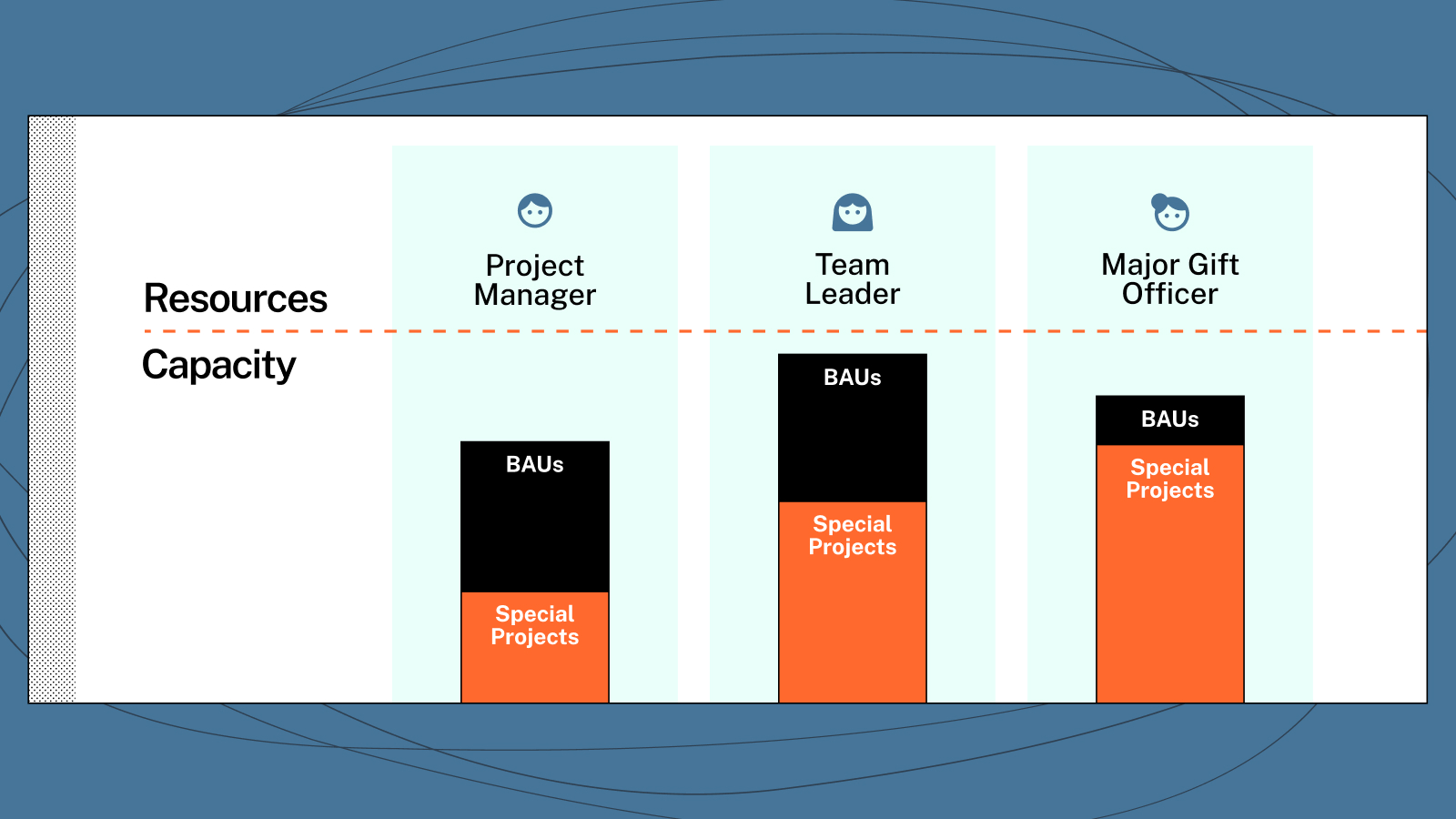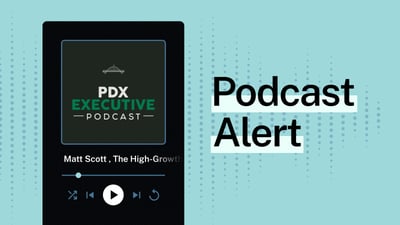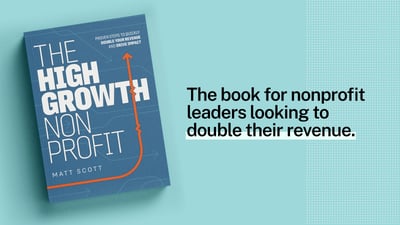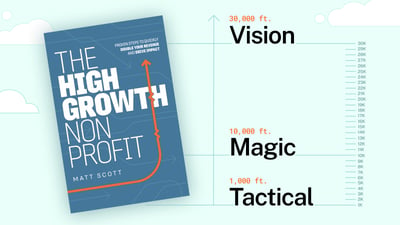Make High Growth Your Business As Usual

On April 11th, CauseMic held an in-person event to launch my new free book, The High-Growth Nonprofit.
What a great turnout and a chance to meet a lot of terrific, cause-driven folks. Along with us handing out copies of the book, I gave a short presentation on how to grow your nonprofit during times of economic uncertainty.
My talk centered on various topics in the book, like how 10,000 feet is the sweet spot for 30,000-foot leaders and 1,000-foot executors to come together.
It’s high enough to identify challenges to the organization’s vision, yet low enough to create actionable solutions. It’s like the primordial soup for spawning ideas.
Especially when, for instance, you dare your team to double your revenue with half of the resources within three years. Let the innovation begin!
But no matter how keen the notion or forward-thinking the strategy or detailed the steps—or even how super the technology—nothing gets done without human capacity.
In short, your team needs more time to work more magic.
From a number of questions following my presentation, it was pretty evident that workforce limitation was a hot button for many in the audience.
Quite right, too, because I’d say it’s the number two obstacle for growth (the first being a small-growth mindset).
Seemingly, there’s only enough time for daily tasks and little or none for special projects that can help your nonprofit develop, right?
However, whether your organization is large or small, this is probably not the case.
Though employees are onboarded for particular roles, some are likely to be either underutilized or performing tasks outside of their job scope. Either way, there are extra hours waiting to be discovered.
So I’m glad my talk touched on several tools for optimizing workforce capacity—like the utilization rate (covered in book Chapter 13 and a previous CauseMic article), project backlog, and business as usual tasks (or, BAUs).
In fact, when you get my book, check out BAUs on page 72.
While your utilization rate lets you know how mission-productive your team is, BAUs offer insight into both hidden opportunities and potential disasters.
First of all, what the heck are BAUs? These are simply duties that team members routinely perform (thus, they’re business as usual).
Over some period of time (like a month or a quarter), gather your various departments or groups and document their BAUs. (Soothe their fevered brow by telling them this isn’t a “Big Brother” exercise or a trust issue—it’s simply to evaluate organizational efficiency and identify single points of failure.)
For example, BAUs for various members of your development and fundraising team may include:
- Writing and sending donor acknowledgement letters
- Merging duplicate database contact records
- Updating donor information
- Researching donor prospects
- Cashing checks and logging donations
- Emailing all subscribers your newsletters and occasion-driven appeals
At first blush, it seems your team is maxed out with BAUs—essentially, their daily tasks. There’s just no time to spare for, say, special projects designed to exponentially grow revenue.
But now, let’s proceed to some “Aha!” moments.
Knowing what the team generally does to fill their workdays, you then do a deeper dive by asking things like:
- Who else on the team can perform a particular BAU?
- Where and whom do we need to cross-train?
- Do we need to hire on a contract, part-time, or full-time basis?
- Is this something a volunteer or intern could handle?
- Should we discontinue any BAUs?
As such, you may discover that donor information doesn’t get updated when Pat is sick or on vacation. So Pat is tied up for hours just playing catch-up upon returning.
Or if Morgan suddenly quits, no one else knows how to research donor prospects or log donations. That means lots of time Jamie spends trying to figure it all out (and likely making notable mistakes along the way).
These are single points of failure that need to be plugged by cross-training or hiring. Not only so your donor processes don’t crash and burn, but to prevent wasting all those hours if they did.
Now let’s say another BAU for your donor team is: Handling special requests from other departments.
For example, Marketing regularly requests data like the number of homeowning donors by zip code, Accounting wants donations from largest to smallest by month, and the grant writer asks you to find out about donor pets.
How many labor hours are spent just trying to accommodate these types of tasks? Instead, discontinue this team’s BAU by hiring or using an intern to handle the special requests.
You can see how determining BAUs and acting accordingly can free up precious time to pursue more strategic objectives.
For example, perhaps the team can now focus on segmenting donors by age, areas of interest, income, donation level, donation frequency, whether their donation is calendar-based (e.g., always in February only), education, and so on.
You can then personalize the best strategies and use optimal channels to cultivate, solicit, and steward both current and potential givers. Talk about revenue impact—Wow!
Make one of your BAUs concentrating on high growth—just take my free book wherever you go.


